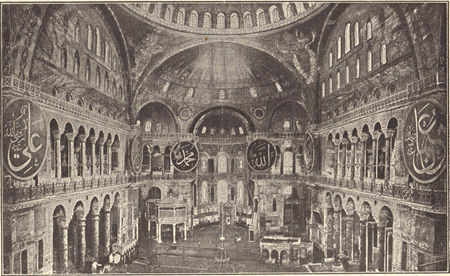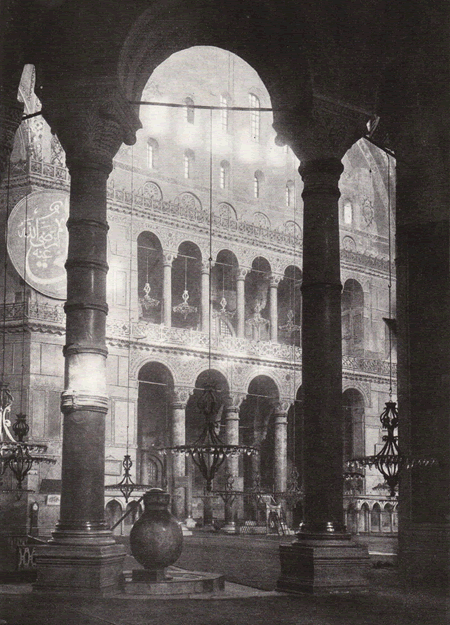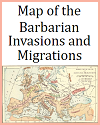| Hagia Sophia in Istanbul, Turkey |
|---|
| www.studenthandouts.com ↣ World Geography ↣ Asia ↣ Western Asia ↣ Turkey |
|
Hagia Sophia Church/Mosque/Museum in Istanbul (Istanbul formerly Constantinople and Byzantium), interior, 1922. Click here to enlarge the image below.  The Hagia Sophia in Istanbul is one of the most iconic and historically significant architectural landmarks in the world. Originally constructed in 537 C.E. under the Byzantine Emperor Justinian I, it served as the cathedral of Constantinople and the heart of Eastern Orthodox Christianity for nearly 1,000 years. Its massive dome, intricate mosaics, and impressive engineering made it a marvel of its time and a symbol of the empire's power and devotion.
The Hagia Sophia in Istanbul is one of the most iconic and historically significant architectural landmarks in the world. Originally constructed in 537 C.E. under the Byzantine Emperor Justinian I, it served as the cathedral of Constantinople and the heart of Eastern Orthodox Christianity for nearly 1,000 years. Its massive dome, intricate mosaics, and impressive engineering made it a marvel of its time and a symbol of the empire's power and devotion.
When the Ottoman Empire, led by Sultan Mehmed II, conquered Constantinople in 1453, the Hagia Sophia was converted into a mosque. The Ottomans added Islamic features such as minarets, a mihrab (prayer niche), and calligraphic panels while preserving much of its Christian art and structure. This transformation symbolized the city's shift from Byzantine to Ottoman rule and the blending of religious traditions.  In 1935, after the establishment of the Republic of Turkey, the Hagia Sophia was secularized and turned into a museum by Mustafa Kemal Atatürk. In 2020, it was reconverted into a mosque, though it remains open to visitors of all faiths.
In 1935, after the establishment of the Republic of Turkey, the Hagia Sophia was secularized and turned into a museum by Mustafa Kemal Atatürk. In 2020, it was reconverted into a mosque, though it remains open to visitors of all faiths.
Today, the Hagia Sophia stands as a testament to centuries of religious, cultural, and political history. Its architecture and legacy provide high school students with a vivid example of the interactions between empires, religions, and civilizations throughout history. THE INTERIOR OF THE WORLD'S MOST FAMOUS MOSQUE: Into the splendor of Justinian's church the Janissaries poured, seeking for treasure; and there, beneath the costly mosaic of the cross, the Christian women were distributed among the mercenary soldiers of the Turk. At noon Mohammed the Conqueror came and sent up thanks to Allah for his victory. So, on the 29th of May, in 1453, the Church of Sancta Sophia became a mosque (1922). Click here to enlarge the image on the right. |
 |  |  |  |  |  |
| Ottoman Empire Books and Films | Ottoman Empire Outlines and PowerPoints |
| Ottoman Empire Maps and Pictures | Ottoman Empire Study Games |
| Ottoman Empire Miscellany | Ottoman Empire Worksheets |
| www.studenthandouts.com ↣ World Geography ↣ Asia ↣ Western Asia ↣ Turkey |








